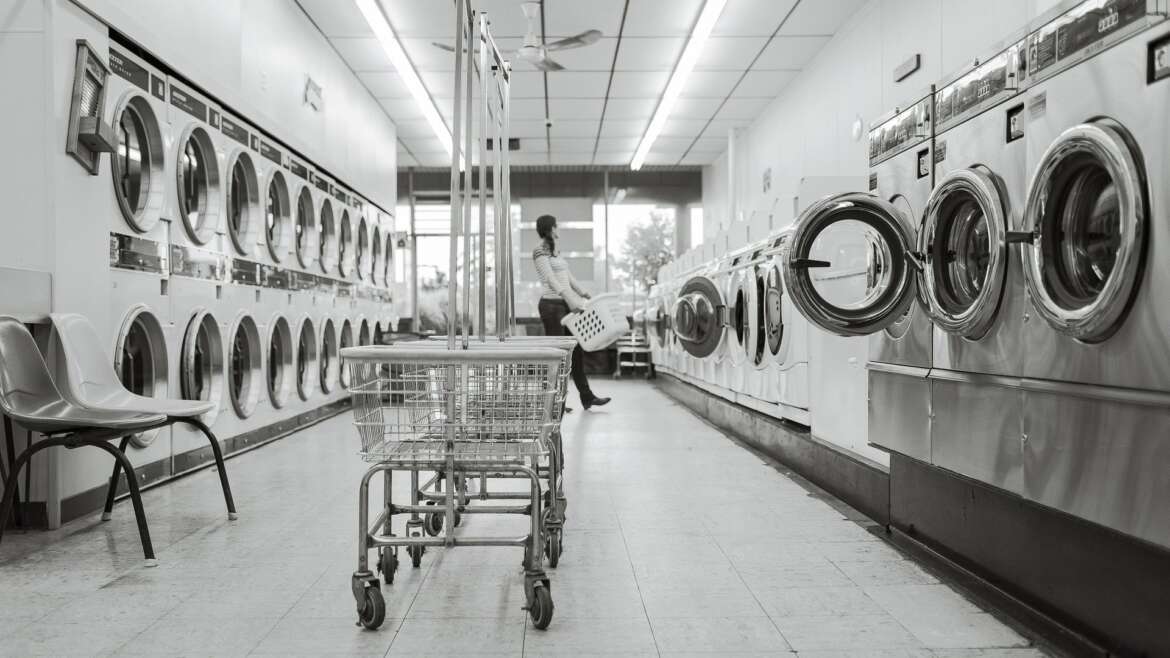Fabrics are pliable materials made of fibers and filaments that are adapted for a particular purpose: clothing, cleaning, covering and more. The fibers used are sometimes obtained from natural sources such as animal hides, plant seeds, stems and leaves, and silkworm cocoons. These usually produce soft, breathable fabrics that are resistant to UV light and discoloration. On the other hand, synthetic fabrics are made from artificial, man-made fibers combined with certain chemicals which give them different characteristics. In terms of production process, most fabrics are either woven, felted or knitted. The fibers and manufacturing processes used to develop each textile material will give them a specific texture, pattern and quality. This should be taken into consideration at the time of bringing your favorite garments to the closest laundromat around me. Fabrics respond in different ways to cycles and detergents, requiring specific care instructions generally noted in the labels. Here we discuss the distinctive features of some popular fabrics.
Natural Fabrics
Bamboo
Bamboo fabrics are made by extracting the cellulose from the leaves and trunk of the bamboo plant, or in other cases by crushing bamboo wood fibers and exposing them to a natural enzyme. While there are different textiles produced from bamboo, the most common one is bamboo viscose, which unfortunately is the least sustainable of all methods. This fabric is highly breathable, perfect for various household textiles such as sheets, blankets and towels, as well as intimate garments. While bamboo is a natural plant fiber, some bamboo fabrics are treated with chemicals that are not environmentally friendly. When washing bamboo clothes and fabrics, you should pretreat any stains with enzyme-based stain removers and avoid chlorine bleach. You can use your regular laundry detergent and cold water on a gentle cycle for garments and a normal cycle for bamboo linens. For heavily soiled items and bamboo towels, you can use warm water and a presoak feature but avoid hot water at any cost as it can cause the fabric to shrink.
Hemp
Hemp fibers come from the stalks of Cannabis Sativa, a plant with psychoactive qualities that is also a source of highly ductile, strong and breathable fabrics as well as fuel and building materials. Hemp fabric is very soft and durable, ideal for hot weather conditions as it is absorbent and resistant to mold and UV rays. It becomes softer with every use and after every wash, and it can be laundered at any temperature (for colored hemp, it is better to use cold water) by hand or in the washing machine on a gentle cycle. Avoid chlorine bleach, even in dilute solutions, as it weakens the fabric. The disadvantages of hemp fabric is that it wrinkles easily and setted stains may become permanent.
Rayon
The oldest cellulose based manufactured fiber, rayon is derived from wood pulp. It is a semi-synthetic fabric because it is treated with chemicals to create low cost clothing and home decor. Very lightweight, smooth and breathable, rayon should be washed in a ‘Delicates’ cycle or by hand without wringing or rubbing as it is more prone to damage when wet. Wash with lukewarm water and hang the items while totally wet so they keep their natural shape and do not wrinkle.
Synthetic Fabrics
Velvet
Soft and luxurious, velvet is a heavy, shiny woven structure of fabric that can be made out of cotton, linen, silk, nylon or polyester. It is durable, thick, plush and warm. The quality of velvet relies on its texture, thus its care is essential so as to not affect its fluffiness, shape, pile, color and shine. In special types of velvet the labels advise dry cleaning, and that should be respected. For crushed velvet or one made fully from synthetic fabrics, it is possible to use the washing machine, while cotton based velvet should be hand washed in cold water. To remove stains, brush the area with the stain with a soft brush without using too much pressure.
Nylon
A totally synthetic fabric made of polymers (plastic), nylon is known for its strength, flexibility and lightweight. It is so durable, easy to wash and fast drying that it is widely used in outwear, underwear, activewear and swimwear. It is washable in any water temperature, however cold water is more sustainable as it does not break down the material which contributes to the contamination of waterways. Regular laundry detergents will do the job, but you should avoid chlorine bleach. Nylon is machine washable, but hand washing will extend its lifespan. In the case of nylon hosiery or lingerie, extra care is necessary such as using a mesh laundry bag to protect the pieces from being torn during the cycle. Gentle cycle and warm water are best for delicate nylon garments.
Final Words
Before you go to a self service laundry near me, make sure you read this basic guide on fabric care. Apart from sorting clothes by fabric type, remember to also separate them by color, degree of soiling and size. Whites, darks and medium colors should be placed in different loads to avoid darker colors from dying lighter items. Heavily soiled pieces should be washed separately from slightly soiled ones to prevent colors from fading, while mixing small and large garments together will provide a better flow inside the washing machine. In the case of fabrics comprising two or more types of cloth, the best option is always dry cleaning. Whatever the textile you are dealing with, Sudz Laundry has everything you need to leave your clothes bright, fresh and strong

